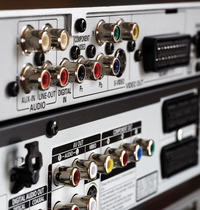Sonic Redirection
Using PulseAudio DLNA, you can redirect your computer's sound to a stereo system or TV via the network. Even Google's Chromecast dongle supports the latest version of the program.
|

fotum, 123RF.com
Using PulseAudio DLNA, you can redirect your computer's sound to a stereo system or TV via the network. Even Google's Chromecast dongle supports the latest version of the program.
PulseAudio constantly has to fend off harsh criticism – sometimes justifiably, but often wrongly because it is definitely possible to do some interesting things with the flexible sound server. You can, for example, adjust the volume of individual applications or redirect the sound to another computer that has speakers connected to its audio output.
This is where DLNA comes into play. The protocol lets you stream multimedia data via the network. Streaming is really easy thanks to PulseAudio DLNA [1] if you have a DLNA-enabled AV receiver or another device with the necessary support, such as a home cinema PC or a Raspberry Pi with Kodi. The latest version of the DLNA server used with PulseAudio also supports Google's Chromecast dongle and (at least in theory) Sonos loudspeakers.
The developer of the program, Massimo Mund, provides a Ubuntu PPA for systems as of 14.04 LTS ("Trusty Tahr") for installing the latest version of PulseAudio DLNA [2]. Listing 1 shows the commands for integrating PPAs and installing the program. There are also packages for openSUSE and Fedora [3]; Arch Linux users will find the program in the AUR [4]. You at least need to install version 0.4.0 to help PulseAudio DLNA make friends with Google's Chromecast (Figure 1). The information in this article is related to PulseAudio-DLNA 0.4.4 from early August 2015.
[...]
Pages: 3
Phonon in KDE 4.4 now supports PulseAudio. Ubuntu 9.10 users can install a new version of the sound server via Launchpad PPA.
Screencasts are ideal for online presentations and demonstrating a particular desktop function. With SimpleScreenRecorder, you can create professional-looking screen videos.
The OpenAV suite of software allows musicians to create music on the Linux platform. It's made up of digital effects and software instruments, giving the user high-quality audio effects and instruments to create, mix, and master.
© 2026 Linux New Media USA, LLC – Legal Notice